At the turn of the year, the cryptocurrency market welcomed a significant event: on January 25, the decentralized stablecoin USDD announced the launch of its "upgraded version" USDD 2.0, aimed at building a truly zero-trust, zero-censorship, fully decentralized, never-freezing, and secure stablecoin.
The launch of USDD 2.0 undoubtedly injected a "stability shot" into the recently turbulent cryptocurrency market, with its circulation surpassing 100 million within less than two weeks. Many industry insiders believe that decentralized stablecoins may be redefined, and this article will deeply analyze the advancement of USDD.
Why Upgrade USDD?
USDD initially entered the crypto market as an algorithmic stablecoin, initiated by the TRON DAO Reserve in collaboration with mainstream blockchain institutions. It operates on the TRON network and connects to Ethereum and Binance Chain through the BTTC cross-chain protocol. The original intention behind launching USDD was the crypto community's realization that the current prosperity of the stablecoin industry is controlled by various large centralized institutions. In extreme environments and sudden events, users' asset safety is exposed to risks, thus necessitating a new decentralized stablecoin solution that does not rely on central institutions and is not affected by external regulatory factors. USDD emerged as a "disruptor" in this context.
In fact, the upgrade of USDD was not a spur-of-the-moment decision. Sun Yuchen had already outlined the upgrade path for USDD in a public letter in 2022, dividing its development into four versions: 1.0 Space, 2.0 Heavenly Palace, 3.0 Moon, and 4.0 Mars, symbolizing humanity's four goals in participating in space exploration with TRON in the future.
In the 1.0 Space version, the development of TRON USDD was fully entrusted to the TRON DAO Reserve and mainstream industry institutions for management. At the inception of the TRON DAO Reserve, it preserved and managed $10 billion in high-liquidity assets raised by blockchain industry initiators as early reserves to maintain the exchange rate stability and rigid interest rate payments of TRON USDD. The TRON DAO Reserve initially set the base risk-free interest rate for USDD at 30% and coordinated with relevant decentralized and centralized institutions receiving USDD to implement this interest rate.
The upgrade to USDD 2.0 aims to enhance its security, decentralization, and overall stability by integrating more robust mechanisms (such as secure liquidation processes, dynamic collateral ratio adjustments, and enhanced risk management protocols) to ensure that USDD can better withstand market fluctuations. For example, when the price of USDD deviates, arbitrage opportunities will encourage buying or selling to bring the price back on track, maintaining a 1:1 peg with the US dollar.
It can be said that TRON USDD is a small step in the development of TRON stablecoins, but a significant step for humanity in achieving ultimate financial freedom.
What Are the Differences Between USDD 2.0 and the Old Version?
USDD 2.0 is a fully decentralized stablecoin pegged to the US dollar, supported by cryptocurrency collateral. Unlike traditional stablecoins, USDD 2.0 operates without a central institution and plans to introduce more community-driven features, allowing users to actively participate in governance and decision-making, ensuring that the protocol develops based on collective input. It also enhances the system's transparency and efficiency, improving collateral management and liquidity solutions. The new version of USDD aims to provide users with a safer, more adaptable stablecoin, making it easier to integrate with decentralized finance (DeFi) platforms and ensuring the long-term growth and sustainability of the ecosystem.
Additionally, USDD 2.0 is immutable and cannot be frozen, giving users complete control over their assets. Its decentralized nature avoids the risks associated with centralization and provides a trustless solution for transactions within the DeFi ecosystem, aiming to bridge the gap between traditional finance and the evolving DeFi world, offering users a stable and reliable currency for trading and investment.
Compared to previous versions, USDD 2.0 introduces several key improvements and innovations that further enhance its decentralization and security.
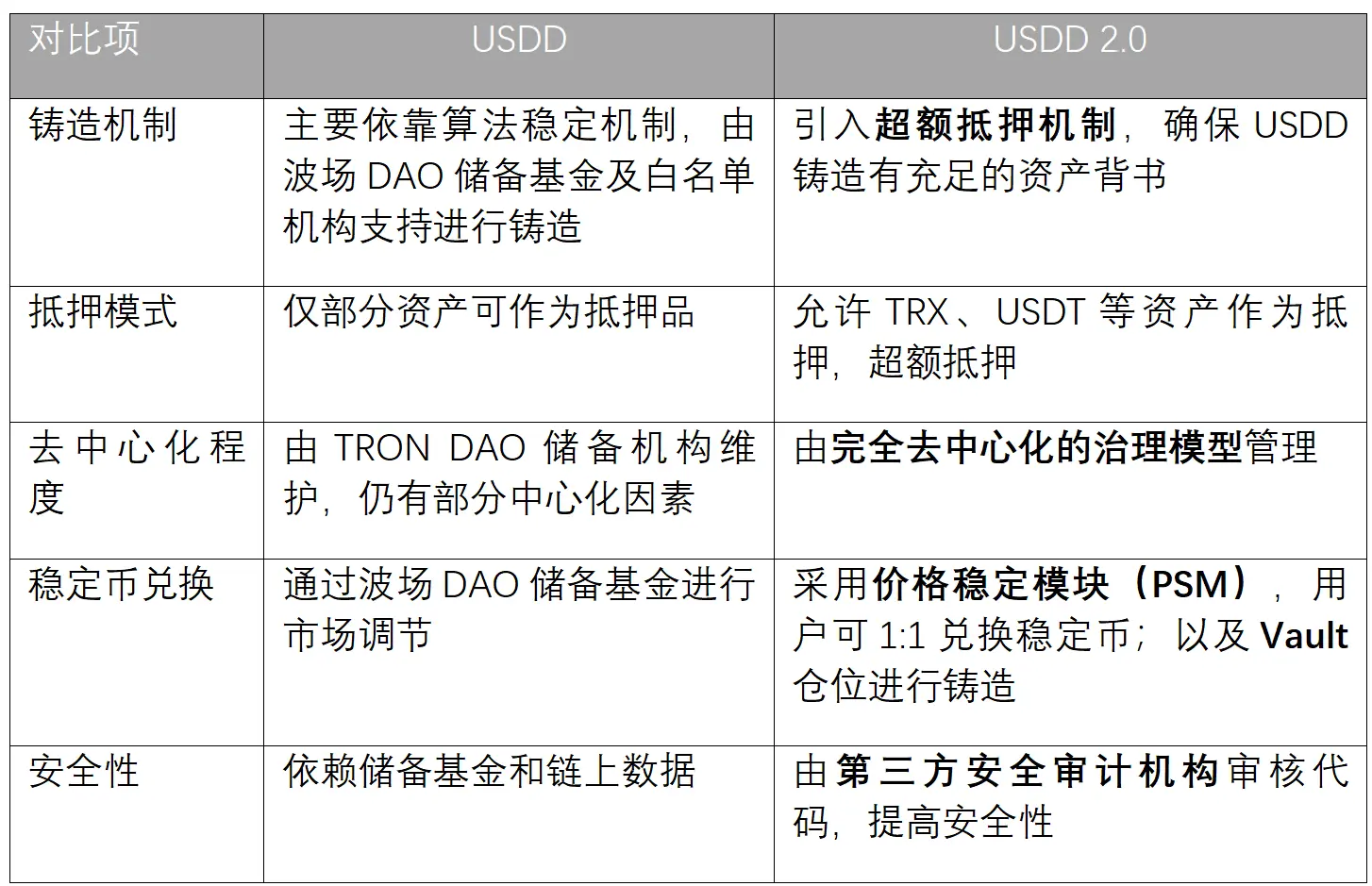
The core innovation of USDD 2.0's minting process is over-collateralization, meaning that all issued USDD is backed by assets exceeding 100%. Users can mint USDD by collateralizing assets such as TRX and USDT, with the collateralization ratio typically set above industry standards (as shown in the image below) to prevent stability risks from market fluctuations. If the collateralization ratio falls below the set value, the system will trigger a liquidation mechanism to automatically sell part of the collateral to maintain stability.
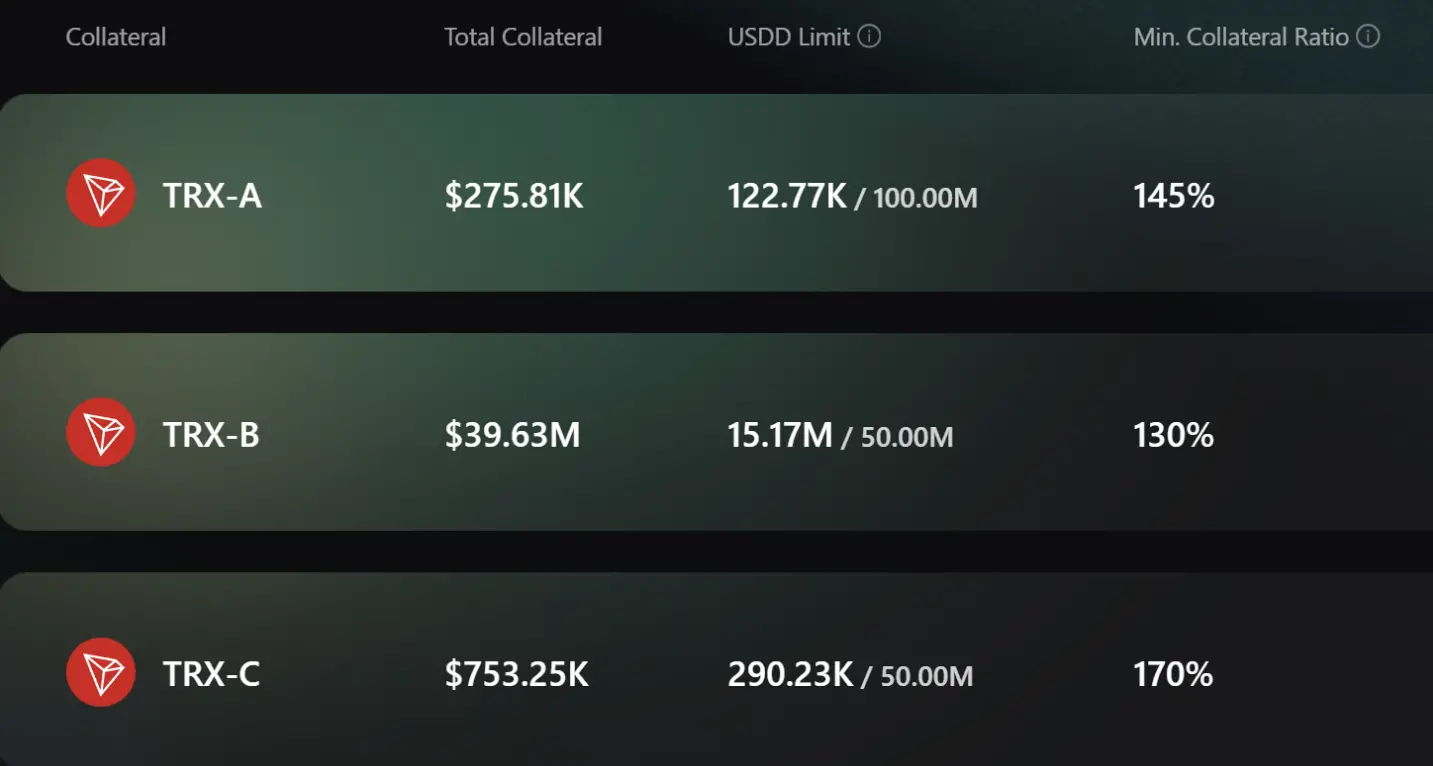
Furthermore, USDD 2.0 introduces a Price Stability Module (PSM) to facilitate the conversion of stablecoins to USDD. The PSM allows for seamless, nearly zero-fee exchanges between USDD and supported stablecoins (initially USDT), with plans to gradually increase support for other stablecoins in the future to enhance user flexibility and accessibility.
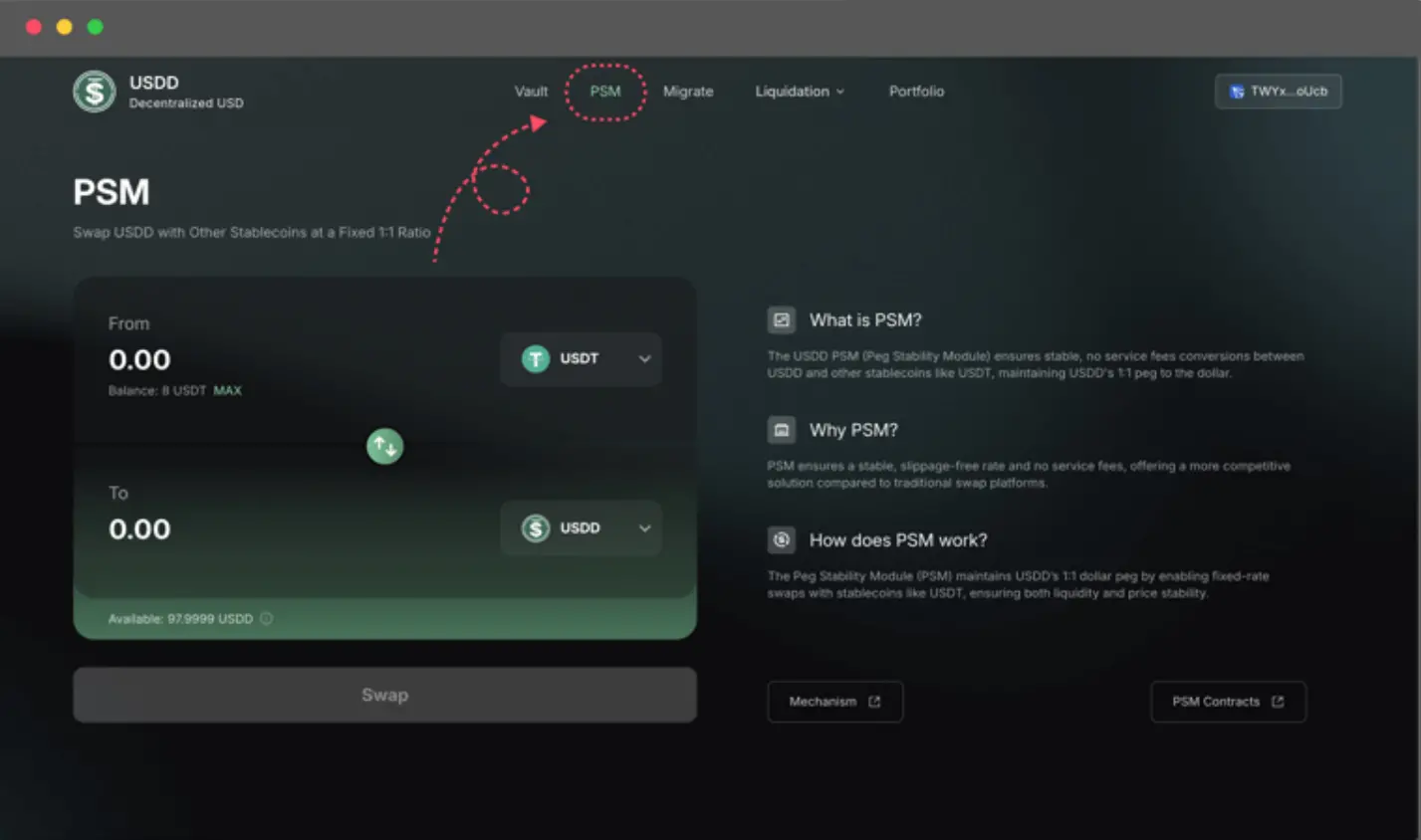
The PSM feature is designed to be user-friendly, providing quick and secure conversions with no slippage or additional fees, making it an essential tool for users seeking to maintain a 1:1 peg with USDD when interacting with other stablecoins. It also allows the market to spontaneously maintain the price stability of USDD. If the market price of USDD drops to 0.98 USDT, arbitrageurs can buy USDD at a low price and exchange it for USDT at a 1:1 ratio through the PSM, pushing the USDD price back to $1. Conversely, if the USDD price exceeds $1, users can exchange more USDD, increasing market supply and suppressing price rises. Through the PSM, USDD avoids the collapse risk seen with UST and possesses stronger market adaptability.
More importantly, to ensure transparency and security, all collateral supporting USDD is stored in publicly verifiable smart contracts. Users can view the contract address on the blockchain explorer to verify funds at any time, ensuring that the collateral remains unaffected and completely secure. Users only need to visit TRONSCAN and enter the contract address to check the fund balance.
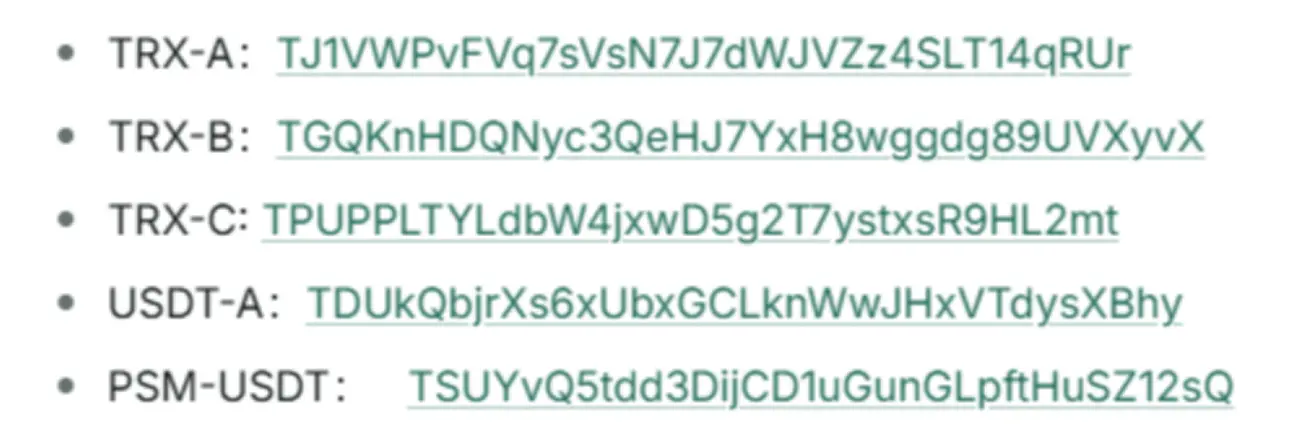
Additionally, security is the top priority for USDD 2.0. Its smart contracts have undergone rigorous security audits by the blockchain security company ChainSecurity to ensure the protocol's safety and integrity. These audits assessed potential vulnerabilities and verified the system's robustness. ChainSecurity noted in its report that the contract codebase of USDD 2.0 provides a satisfactory high level of security while performing excellently in asset solvency and functional correctness.
Based on the above analysis, we can summarize the comparison as follows:
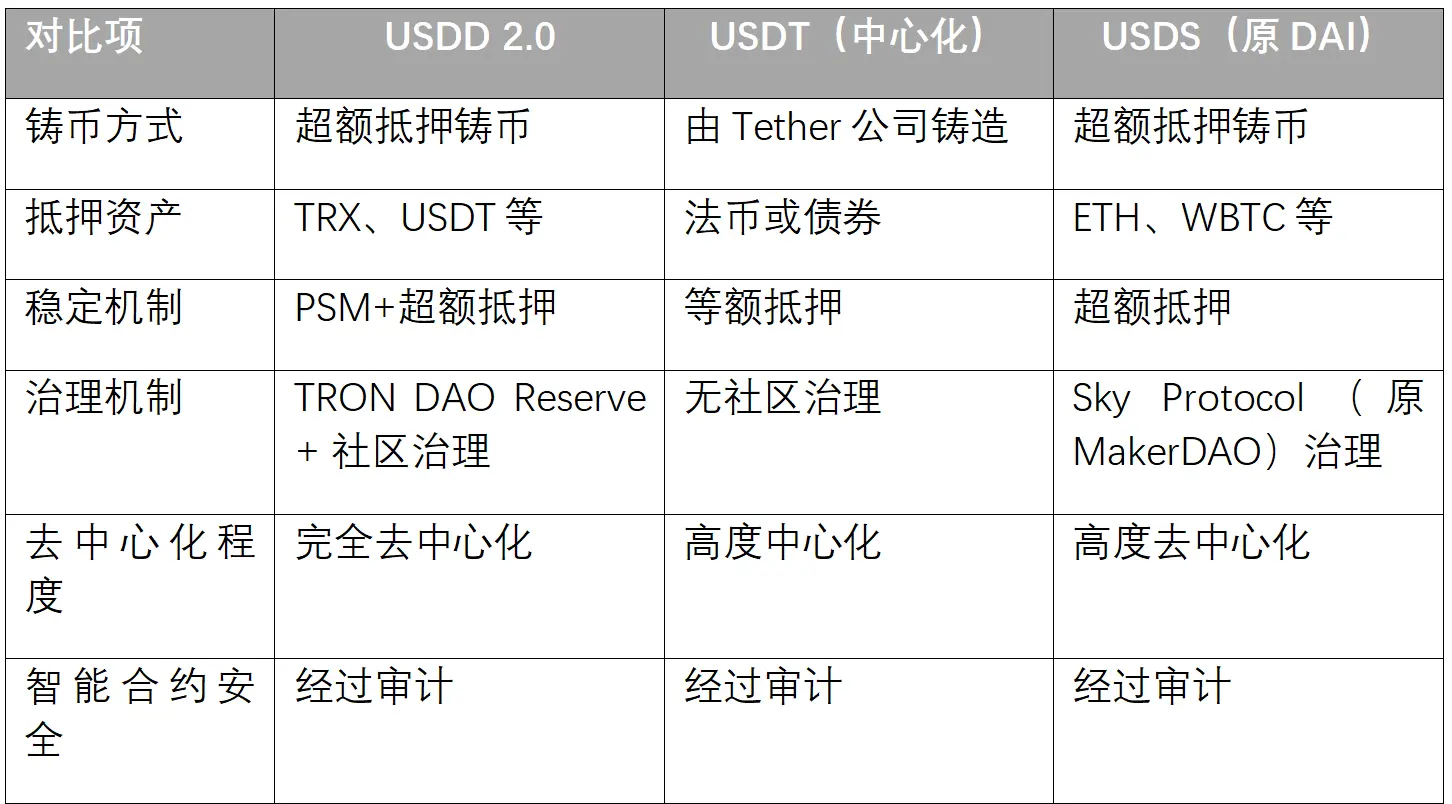
It is worth mentioning that Sun Yuchen previously stated on platform X: "The USDD 2.0 APY is 20%, fully subsidized by TRON DAO. All interest will be sent in advance to a transparent address, with no other reason—just because we have enough money. So, stop asking me questions like 'where does the yield come from.'"

Frankly speaking, the 20% annual yield offered by USDD 2.0 through JustLend is primarily based on the strong support of the TRON ecosystem, the over-collateralization model, the yield subsidy mechanism, and TRON's dominant position in the stablecoin market. First, the TRON DAO subsidy ensures the stability of yield distribution. Official data shows that the total market value of TRON-based stablecoins is approaching $63 billion.
Secondly, the TRON ecosystem generates revenue through various means such as DeFi lending and transaction fee income, which also effectively supports the high yield of USDD 2.0.
Thus, it can be seen that the 20% yield of USDD 2.0 has strong financial backing, ensuring that users' interest sources are stable and reliable, and it is also "far ahead" compared to industry peers:
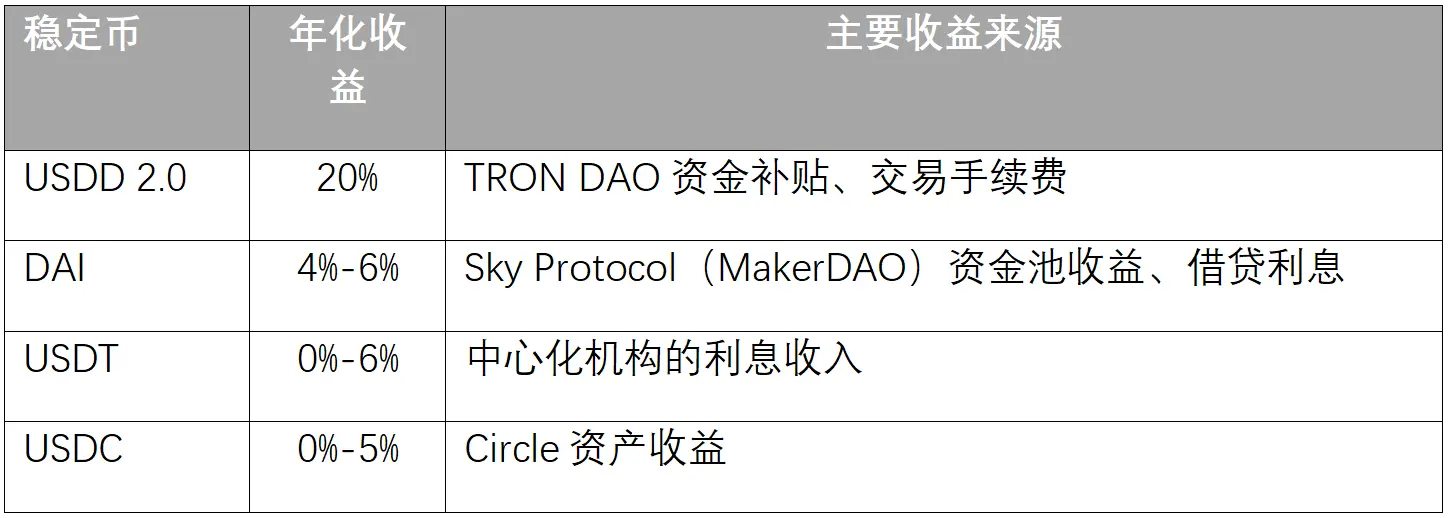
How to Migrate to USDD 2.0?
USDD 2.0 has launched a migration feature, allowing users holding USDDOLD to seamlessly upgrade to the new version of USDD. The migration is not time-limited, and tokens can be converted at any time; users just need to navigate to the migration page to access the migration feature.
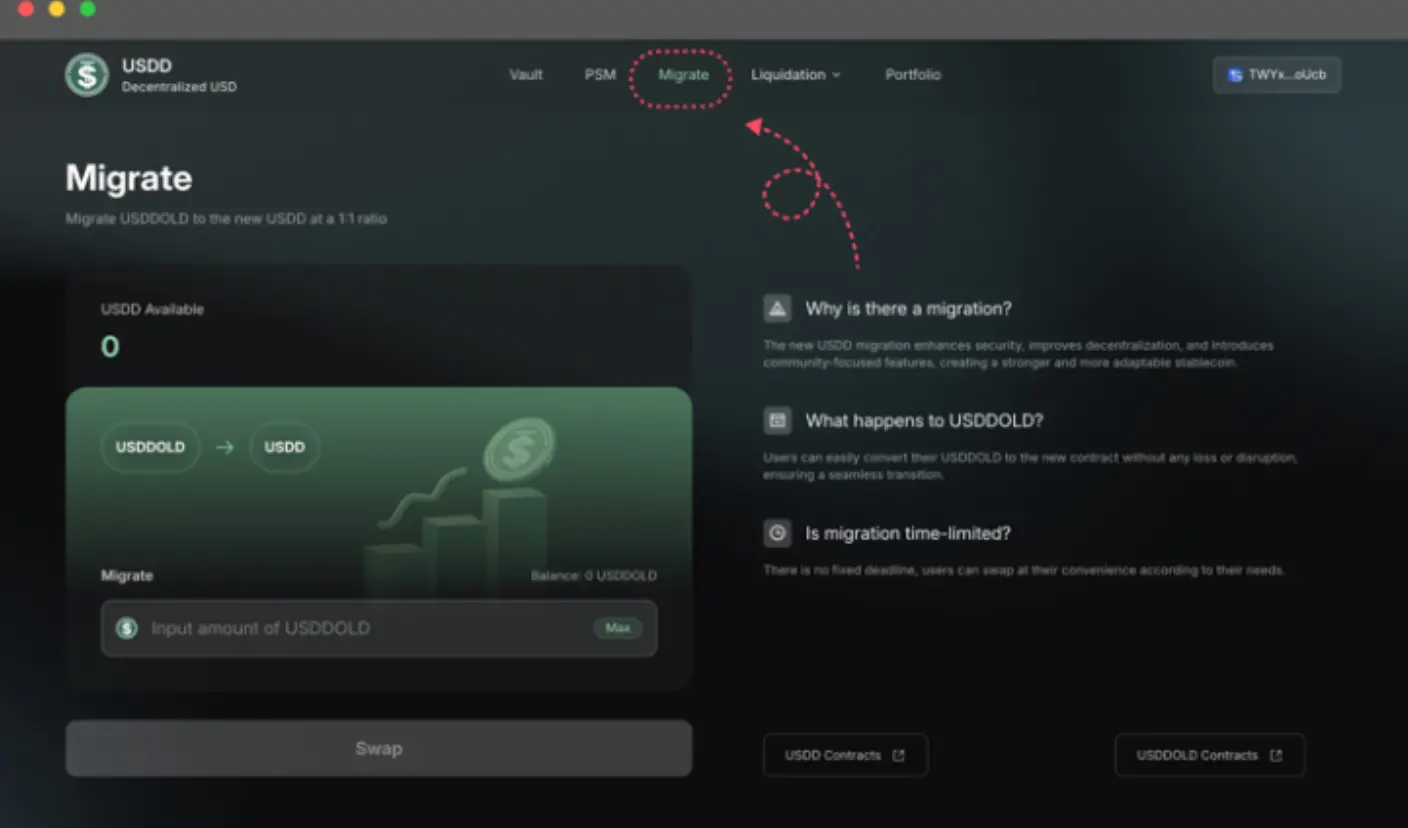
Enter the migration amount: Specify the number of USDDOLD you wish to convert to the new USDD, ensuring that the amount entered does not exceed your wallet balance.
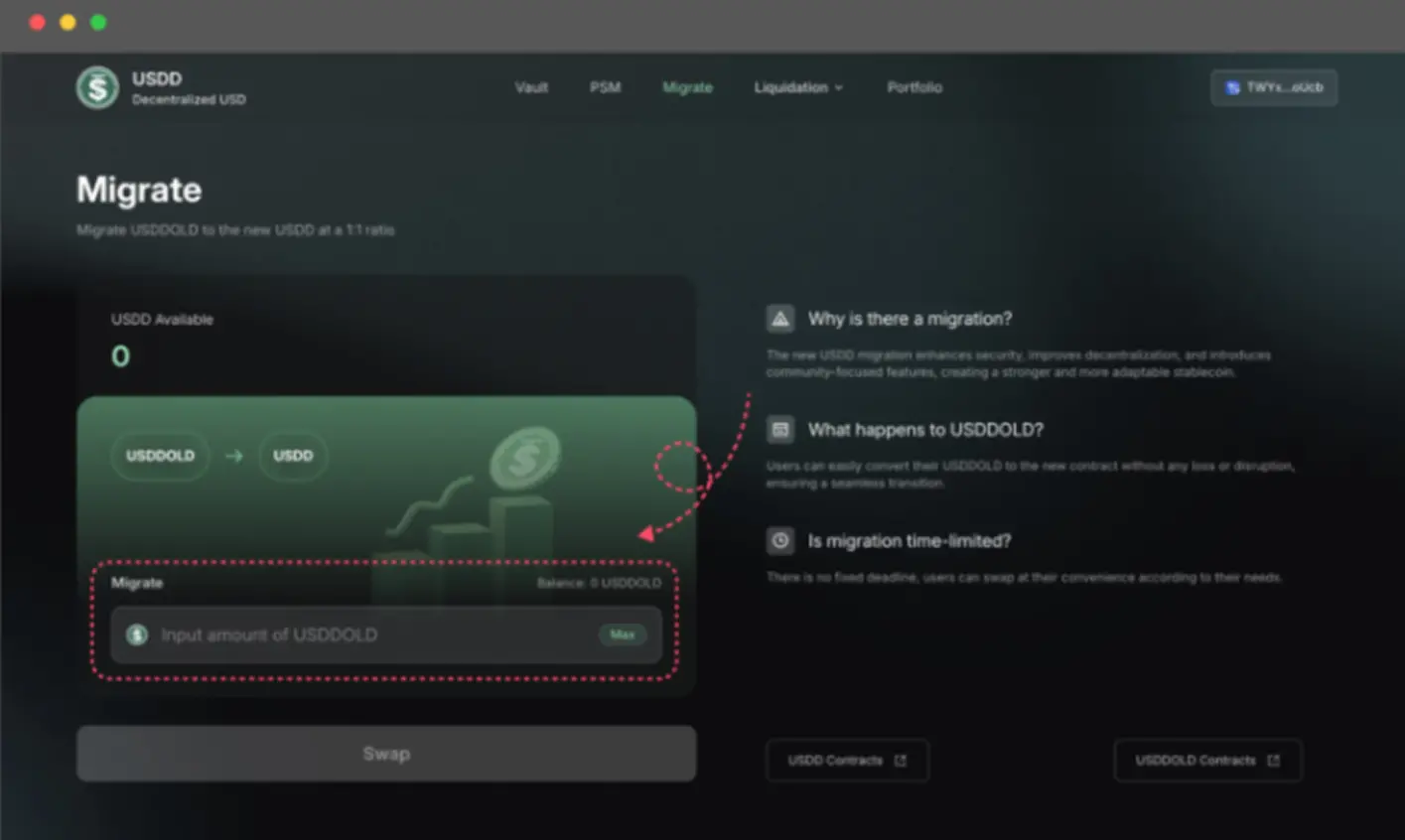
Confirm the transaction: Use the associated wallet to approve and confirm the migration. Once confirmed, the equivalent new USDD will be credited to the wallet, and the migration process only involves gas transaction fees.
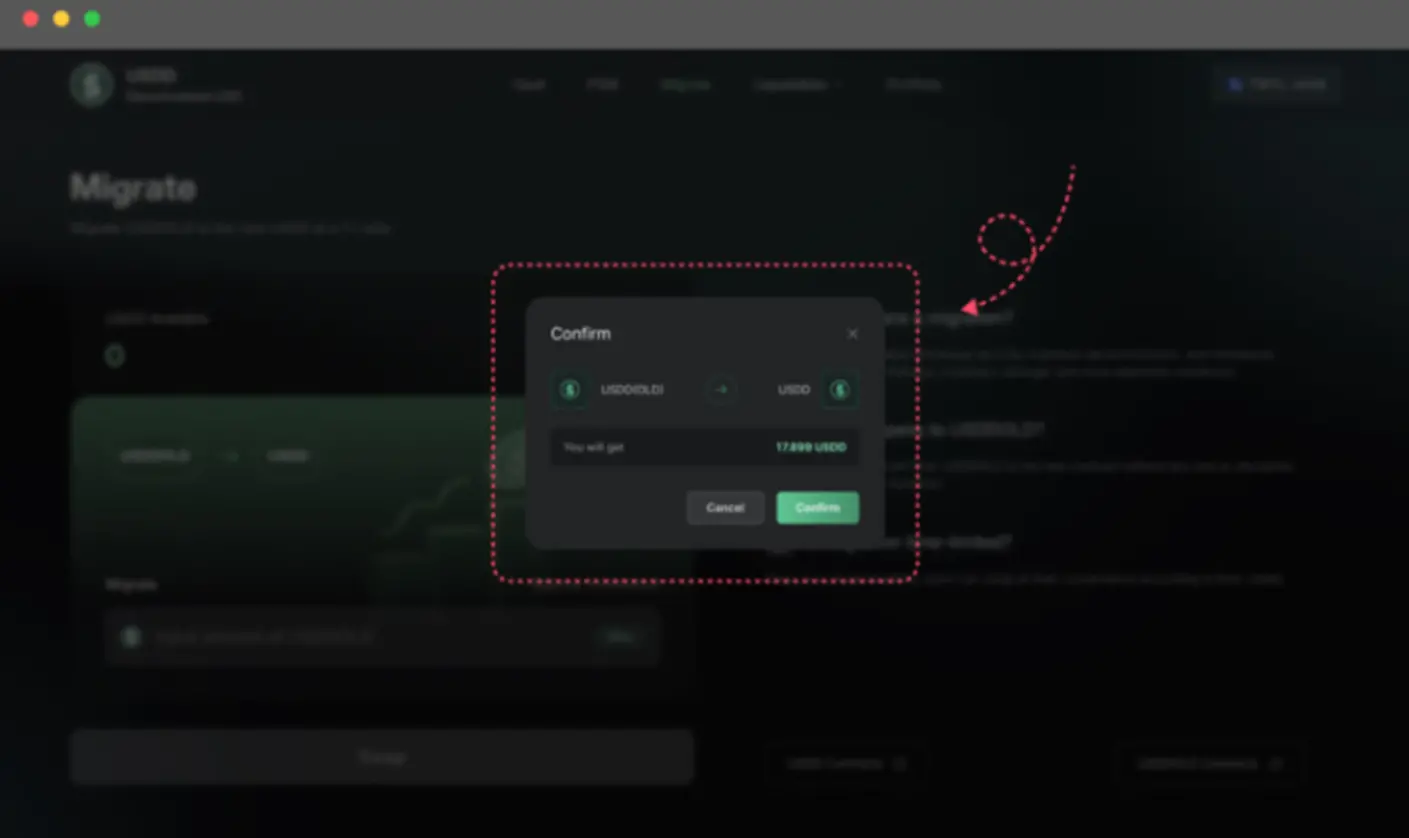
Was USDD 2.0 Born with a Golden Spoon? The New Version of USDD May Be Part of Sun Yuchen's Long-Term Strategy
With Trump successfully elected as the 47th President of the United States, the global cryptocurrency industry is entering a new period of transformation. Adjustments in U.S. policy and regulatory support for stablecoins will give USDD 2.0 greater market potential.
In fact, the timing of Sun Yuchen's announcement of USDD 2.0 is quite "interesting"—
- In November last year, Sun Yuchen joined the Trump family project World Liberty Financial (WLFI) as an advisor. WLFI stated on platform X: "Sun Yuchen's insights and experience will help us continue to innovate and grow." It is reported that the day before the announcement, Sun Yuchen invested $30 million in WLFI, becoming its largest investor.
- On January 19, sources revealed that the Trump family-supported crypto project World Liberty Financial (WLFI) plans to include TRON's mainnet token TRX in its cryptocurrency reserves.
- On January 20, on-chain data monitored that Sun Yuchen spent $15 million to purchase 1 billion tokens of the Trump family crypto project WLFI.
- On January 25, USDD announced the launch of its "upgraded version" USDD 2.0.
According to monitoring data from Arkham, TRX has now become the second-largest token by market value held by the Trump family crypto project WLFI, second only to USDC:
USDC: 15.478 million tokens, approximately $15.49 million;
TRX: 40.718 million tokens, approximately $9.54 million;
STETH: 1,829 tokens, approximately $4.85 million.

If we say that Sun Yuchen comes with resource advantages, it seems not an exaggeration, as can be seen from his relationship with the Trump family project. On this basis, upgrading USDD also seems natural, as it can leverage resources and connections to effectively promote the upgrade while ensuring safety during the process. Coupled with TRON's core position in the stablecoin market, it means that USDD 2.0 is not a stablecoin "starting from scratch," but rather one born with a golden spoon. Sun Yuchen confidently declared on social media, "Welcome CEX to contact for cooperation, all will receive a 20% annual USDD reward."
Moreover, David Sacks, the White House crypto and AI director, recently expressed his concern about stablecoins at a press conference on digital assets. David Sacks is a well-known investor in Silicon Valley, an early executive at PayPal, and a staunch supporter of Web3 and decentralized finance. He has long advocated for the integration of cryptocurrency with the traditional financial system and has repeatedly stated that stablecoins will play a core role in global payments.
David Sacks and the Silicon Valley capital behind him may drive USDD 2.0 into the global financial system, making it a key variable in the stablecoin market. The DAO governance and over-collateralization model of USDD 2.0 aligns with the trend of decentralized stablecoins and may even become a decentralized alternative for payment networks like PayPal and Stripe. Thus, USDD 2.0 may not just be an upgrade of TRON's ecosystem stablecoin, but rather a long-term strategy by Sun Yuchen in the global stablecoin market and DeFi system.
As the core stablecoin of the TRON ecosystem, USDD 2.0 is expected to be used for global payments and cross-border settlements. Its over-collateralization and decentralized governance model also meet WLFI's requirements for decentralized finance. If WLFI receives further policy support, USDD 2.0 could very well become the "decentralized dollar" within the TRON ecosystem, occupying an important position in the global stablecoin market.
Conclusion
The change of the dragon and the snake, between the wooden geese, signifies that a gentleman should be flexible and adaptable in dealing with the world, maintaining inner peace while decisively taking action at critical moments, understanding the situation, and maintaining moderation without going to extremes. Sun Yuchen's choice to upgrade USDD 2.0 at the time of the dragon-snake transition seems to align with the trend.
Of course, USDT remains the dominant player in the current stablecoin market, and the trading volume of USDT on the TRON network is also substantial. USDD still faces some difficulty in challenging USDT's position. Additionally, other emerging stablecoins may become future competitors to USDD, such as First Digital USD (FDUSD), which has received strong support from Binance, making market competition increasingly fierce.
However, with the support of Sun Yuchen and the TRON ecosystem, USDD 2.0 has already demonstrated its unique advantages as a decentralized stablecoin, and it is entirely possible that it will become an important component of the stablecoin market in the future.
免责声明:本文章仅代表作者个人观点,不代表本平台的立场和观点。本文章仅供信息分享,不构成对任何人的任何投资建议。用户与作者之间的任何争议,与本平台无关。如网页中刊载的文章或图片涉及侵权,请提供相关的权利证明和身份证明发送邮件到support@aicoin.com,本平台相关工作人员将会进行核查。




